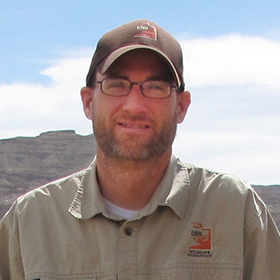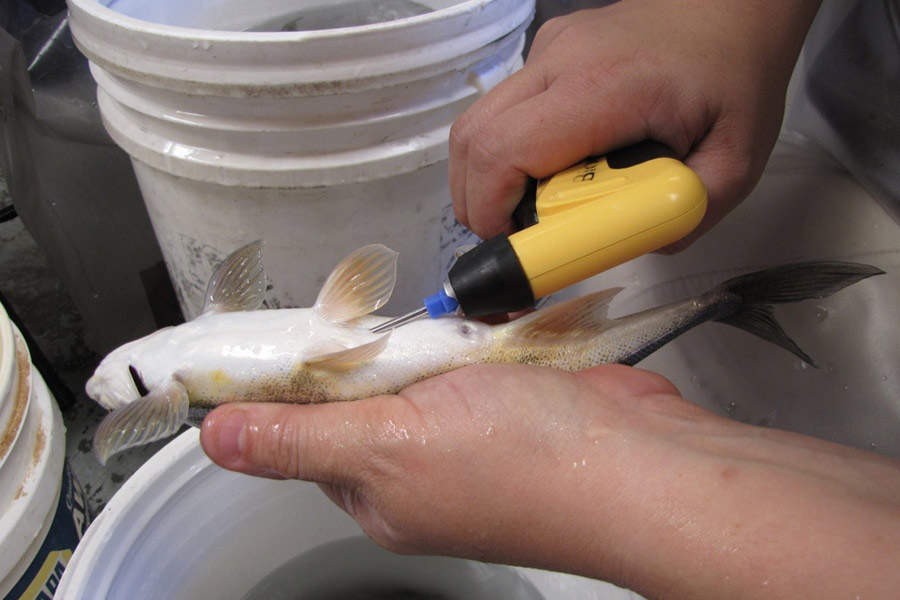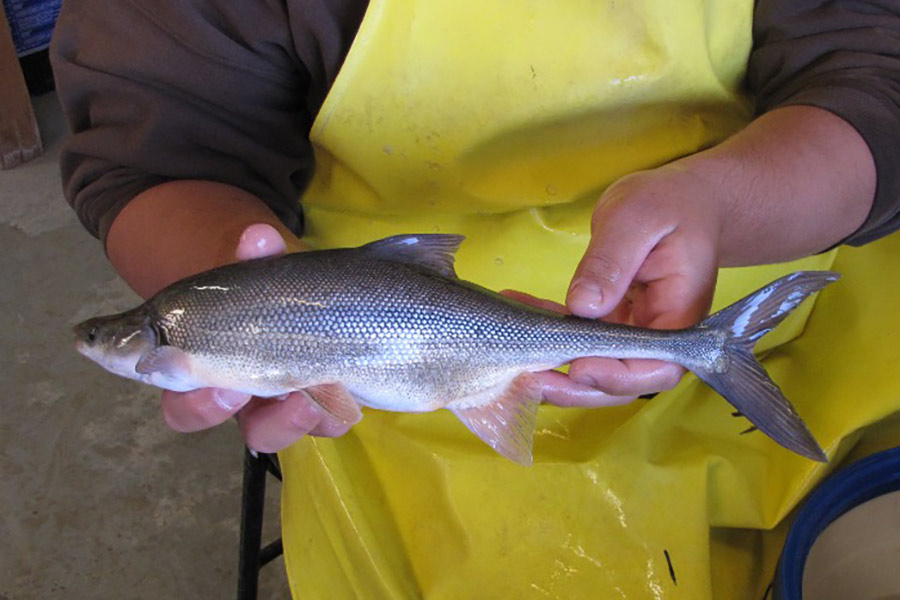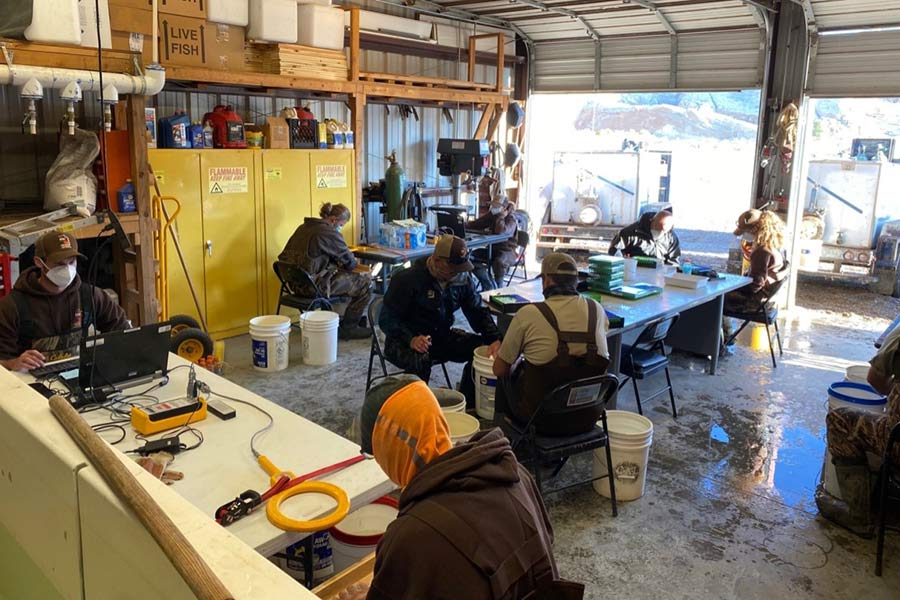Tracking the recovery of one of Utah's rarest fish
Transponder tagging bonytail at Wahweap Fish Hatchery
Zane Olsen
Hatchery Supervisor
Wahweap State Fish Hatchery
For over 25 years, we've been implanting passive integrated transponder tags — commonly called PIT tags — in bonytail chub, which we started raising at the Wahweap Fish Hatchery in 1996. We implant the small tracking devices prior to stocking fish at multiple locations in the Colorado River system. By tracking PIT tags, DWR biologists and aquatics managers can learn more about the survival rates, life cycle and range of the fish we release into the wild.
Bonytail (Gila elegans) are one of the rarest of the Upper Colorado River Basin's four endangered native fish species. A member of the minnow family, these fish can grow to be 22 inches long and have an elongated body that is pencil-thin near the tail.
Bonytail can live up to 50 years in the wild, and typically have gray or olive-colored backs, silver sides and a white belly. This amazing fish eats insects, plankton and plant matter.
Each year at Wahweap's warmwater fish hatchery, we implant PIT tags in 11,000 bonytail before stocking them in the Upper Colorado River Basin.
PIT tags are small, glass-insulated tracking devices about the size of a long grain of rice. Each PIT tag has a radio transponder that contains a specific code, giving every individual fish (or other animal) tagged a unique identification number. A PIT tag doesn't require power, and only becomes active when it passes close to a specialized antenna. When activated, the PIT tag transmits its unique code to a nearby sensor that records the tag number, date and time of detection.
Unfortunately, bonytail numbers have dwindled due to a variety of biological and environmental factors. These include human-built waterway barriers that prevent bonytail from accessing crucial spawning habitat, along with competition from and predation by nonnative species. Bonytail have been protected under Utah law since 1974, and they were federally listed under the Endangered Species Act in 1980.
The Wahweap hatchery works closely with partners like the Upper Colorado River Recovery Program and other local, state, federal and tribal agencies to meet the needs of bonytail and other species in need of conservation. Our goal is to achieve full recovery of bonytail, which would allow for complete delisting under the ESA.
Bonytail at the Wahweap hatchery
Video courtesy of the Colorado River Recovery Program
The documented journeys of bonytail — and other PIT-tagged fish species that are either raised in hatcheries or captured and tagged in the wild — are fascinating. But PIT tags are also an important tool used to interpret migration patterns and to identify barriers that keep fish from returning to crucial historic spawning areas.
Data gathered through PIT tags as part of the Utah Wildlife Migration Initiative has been used to improve fish and wildlife habitat throughout the state and remove or mitigate identified barriers to fish movement.
The Wahweap hatchery is located in scenic Big Water, Utah


















